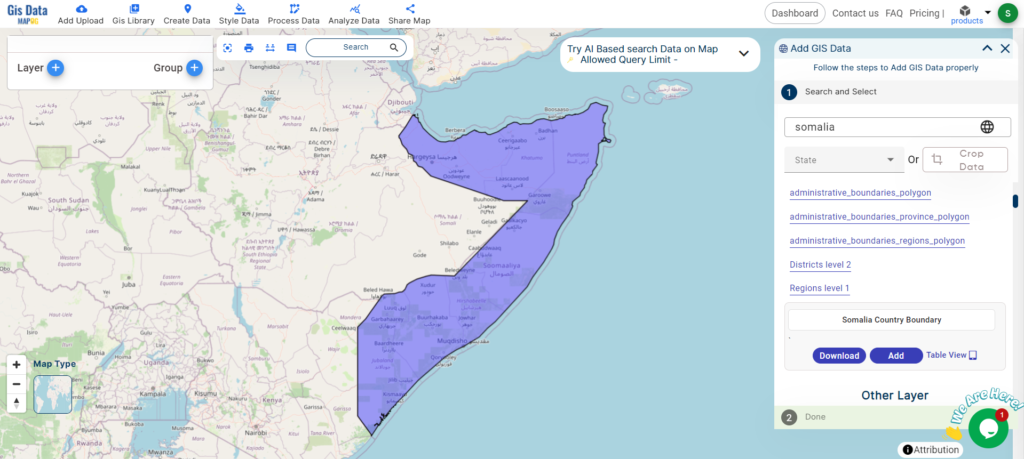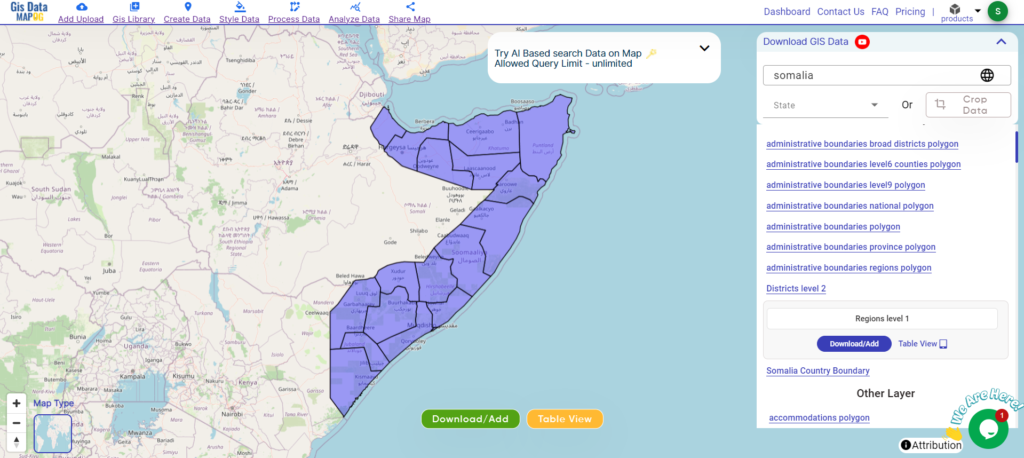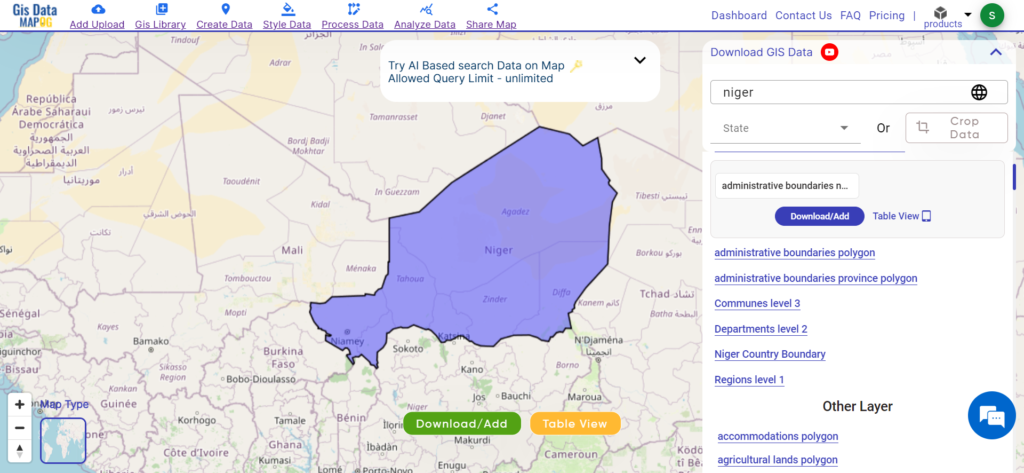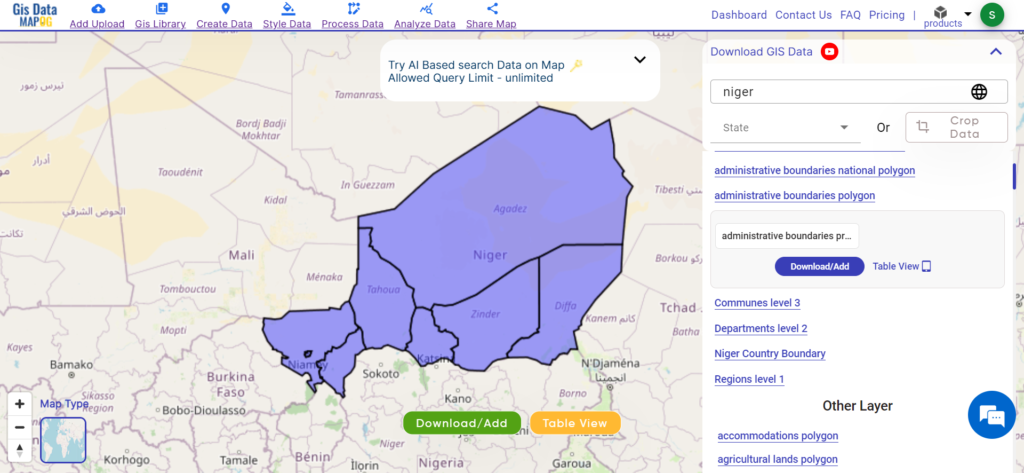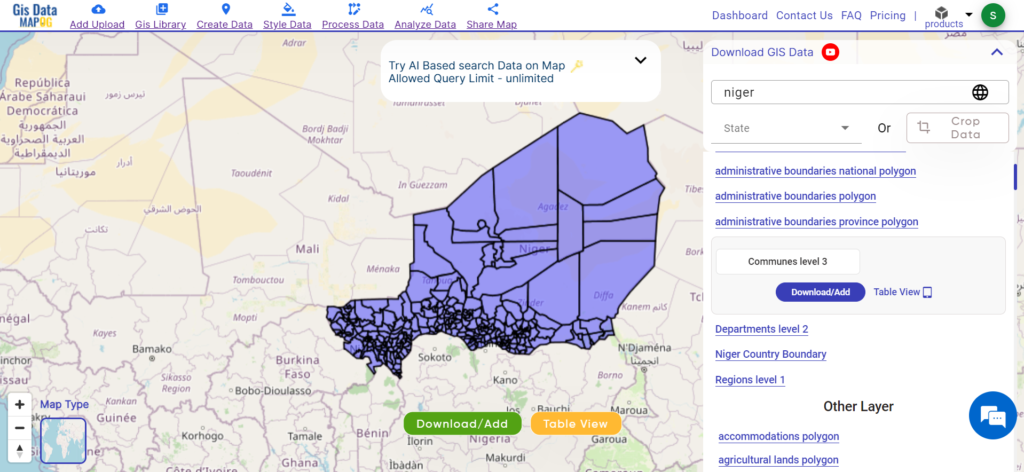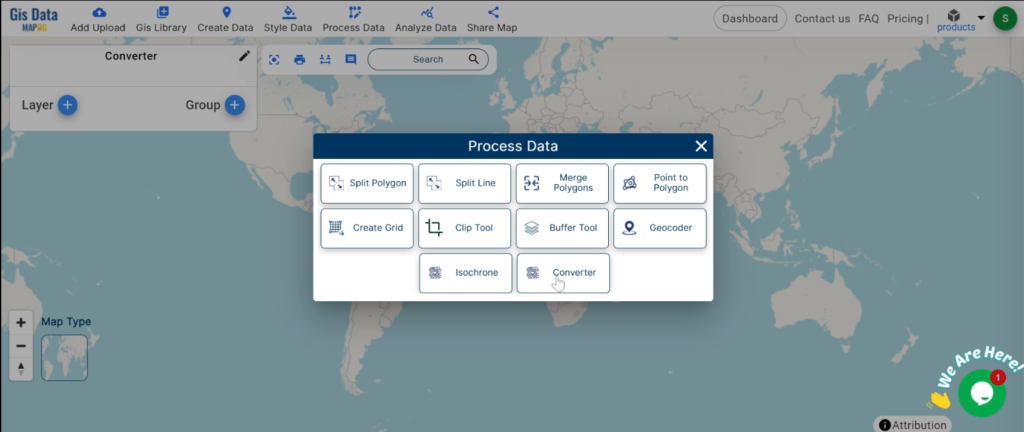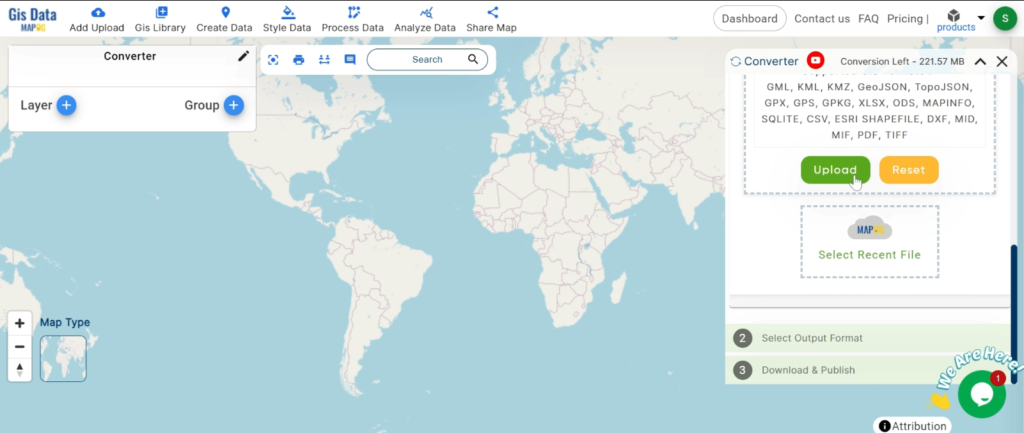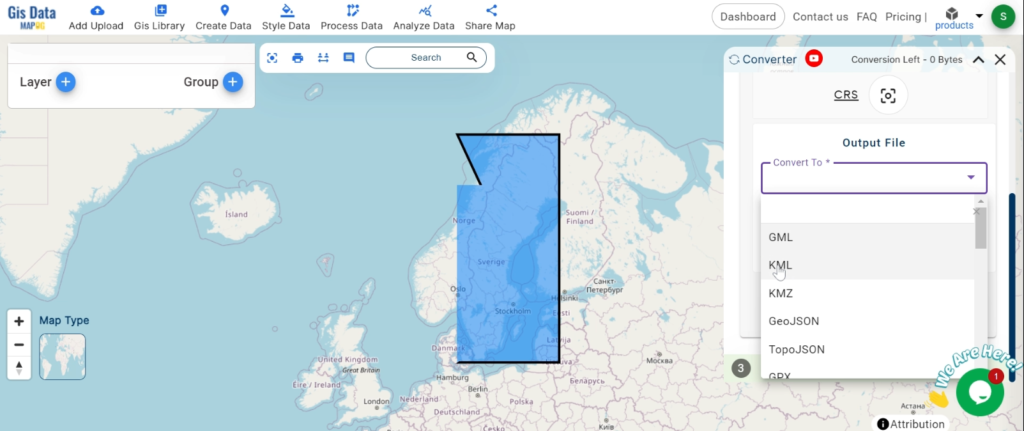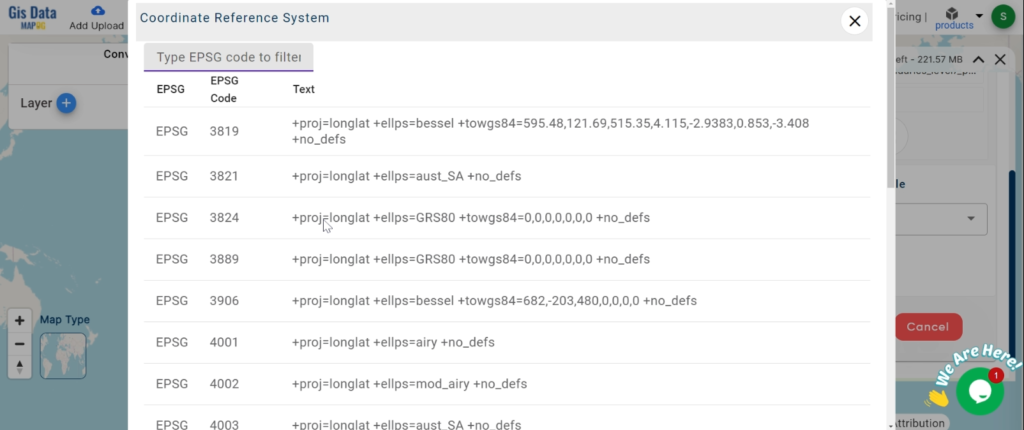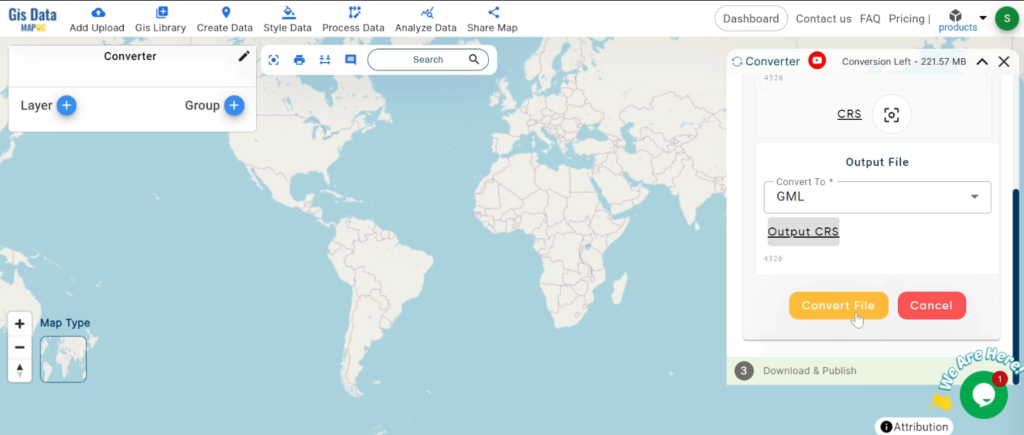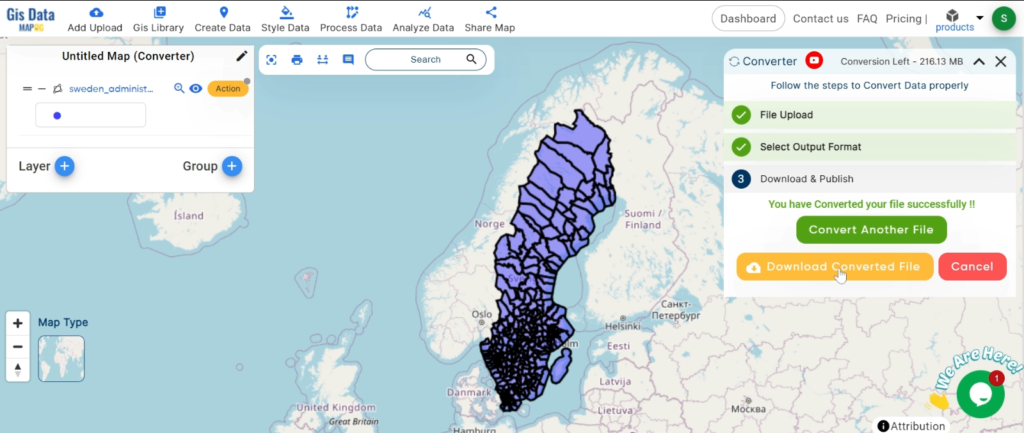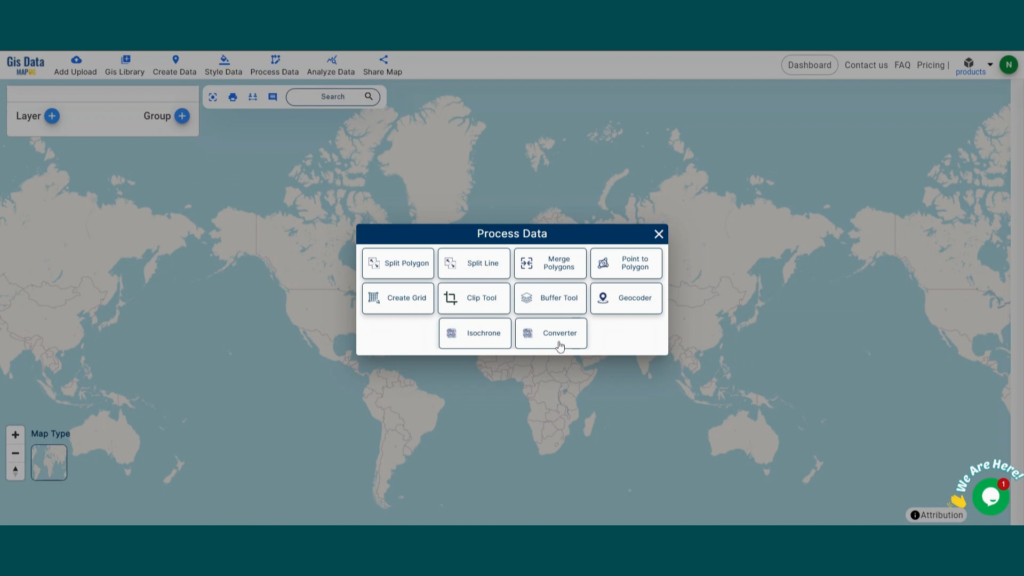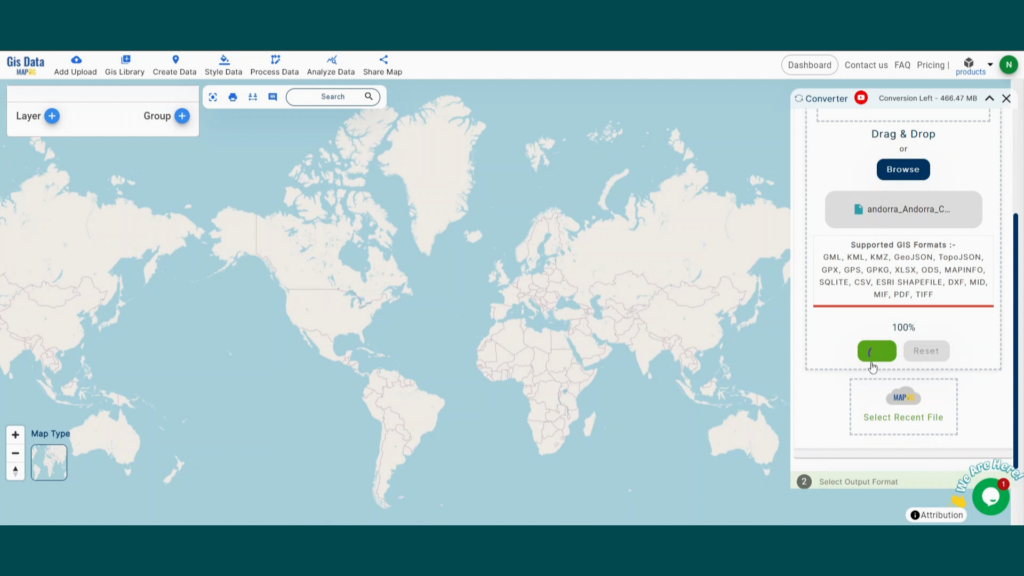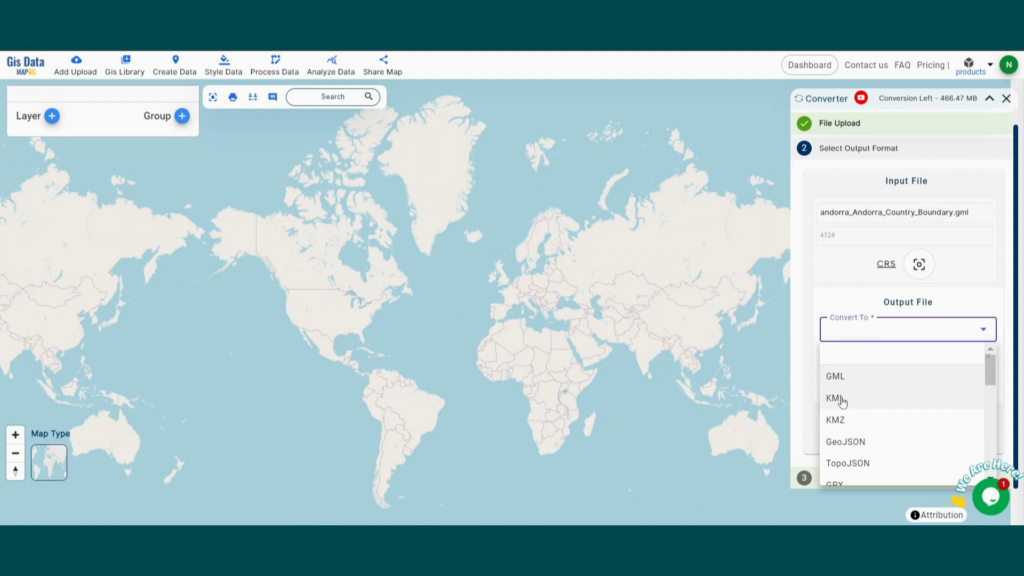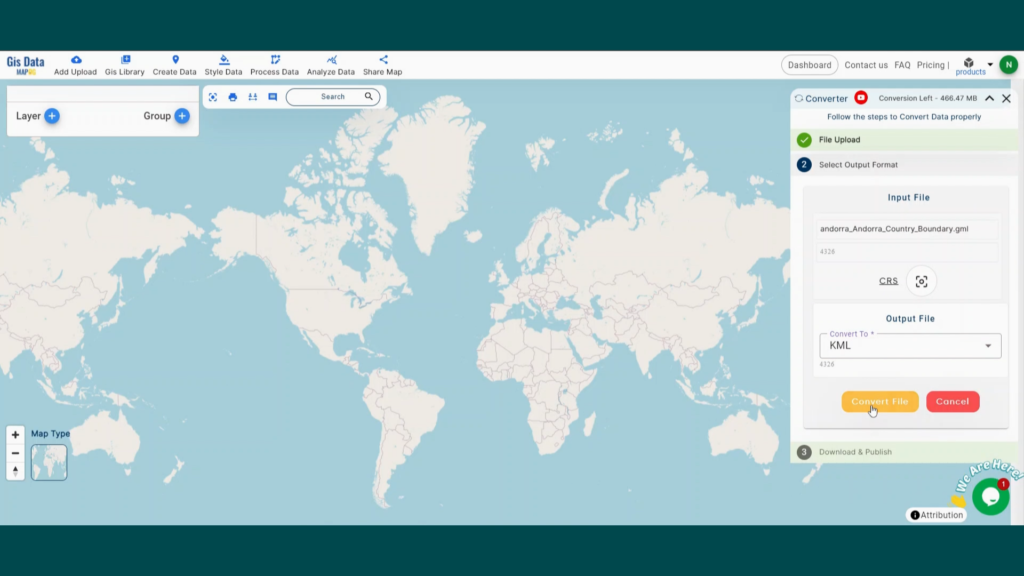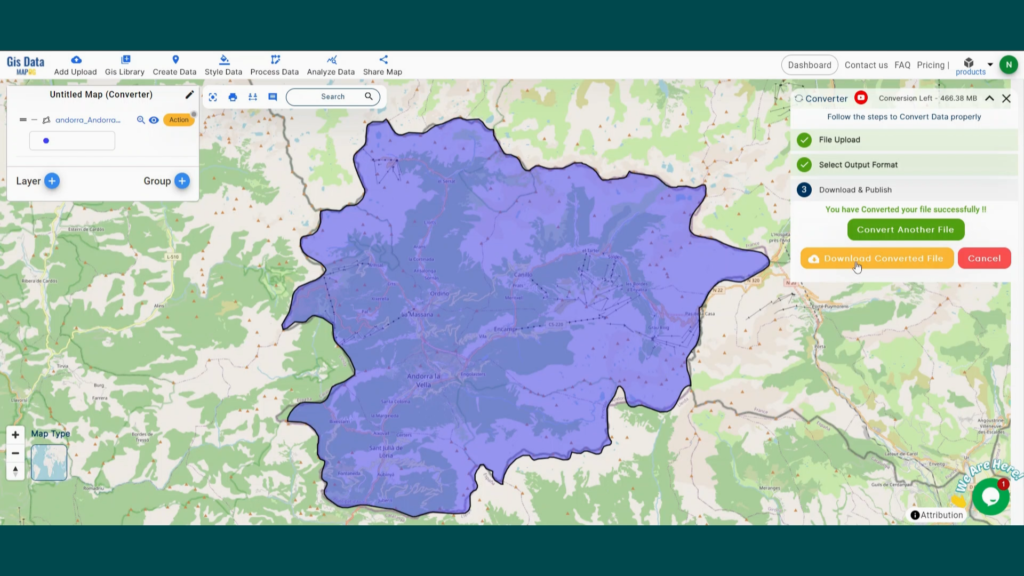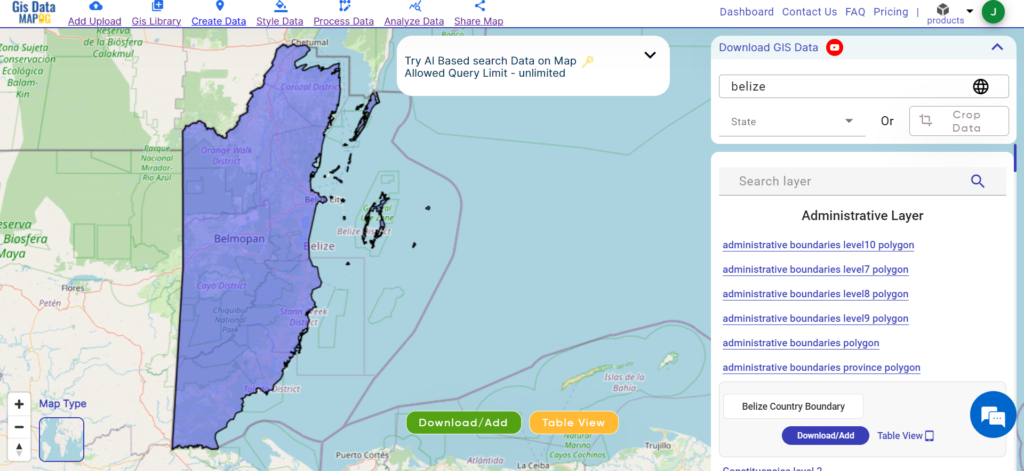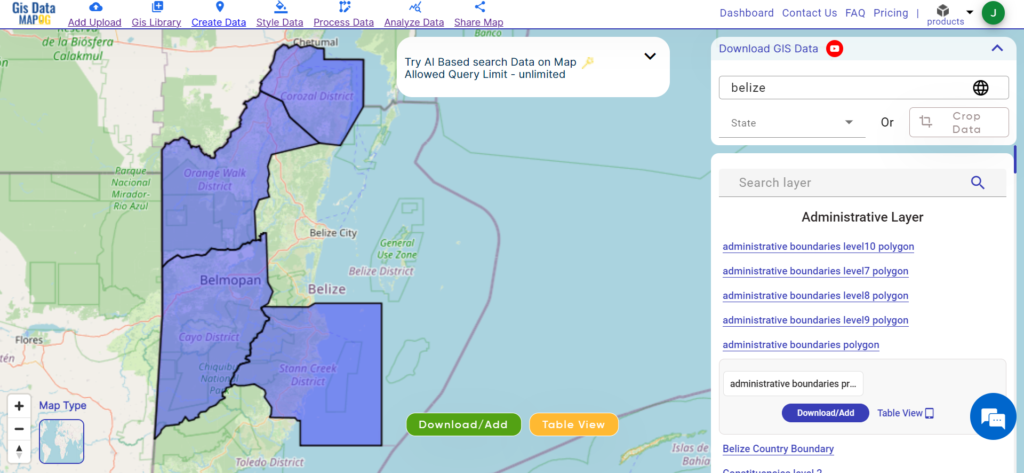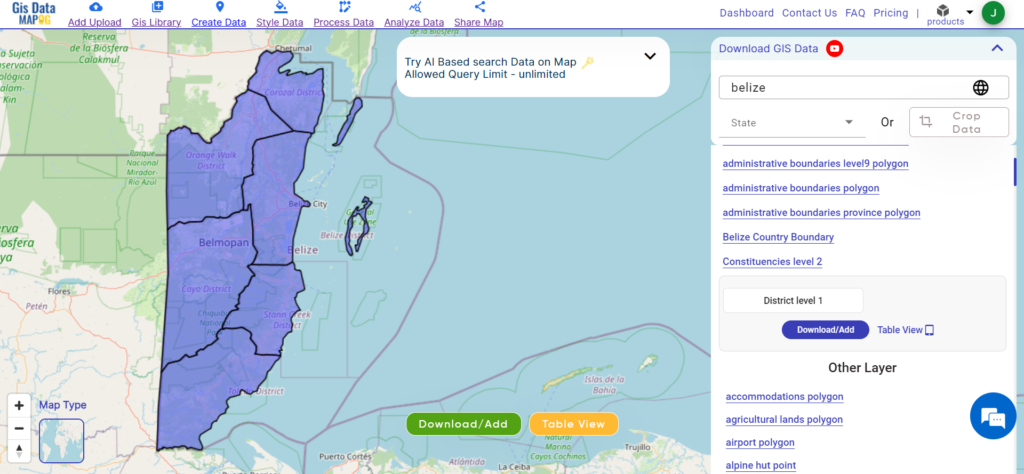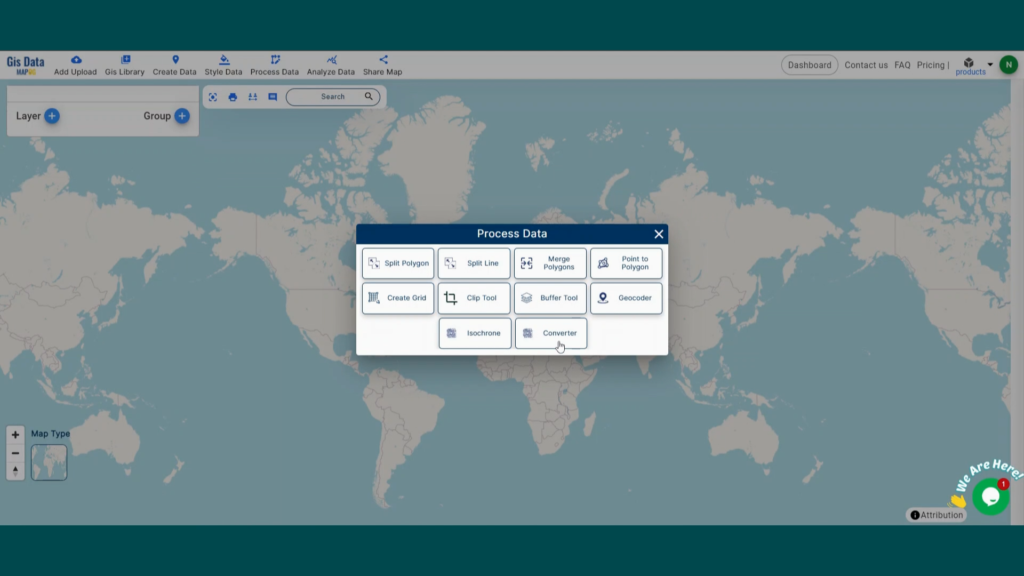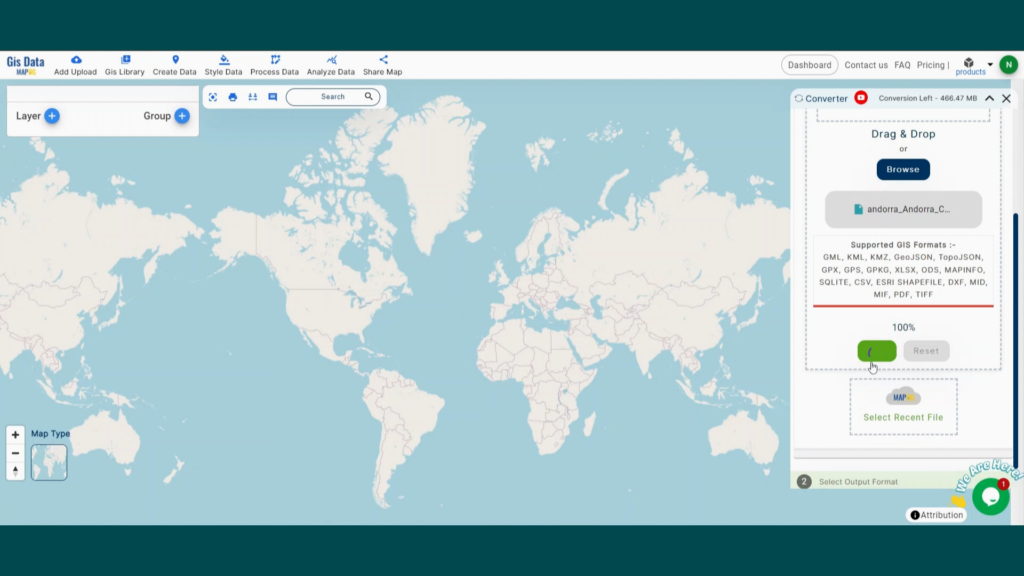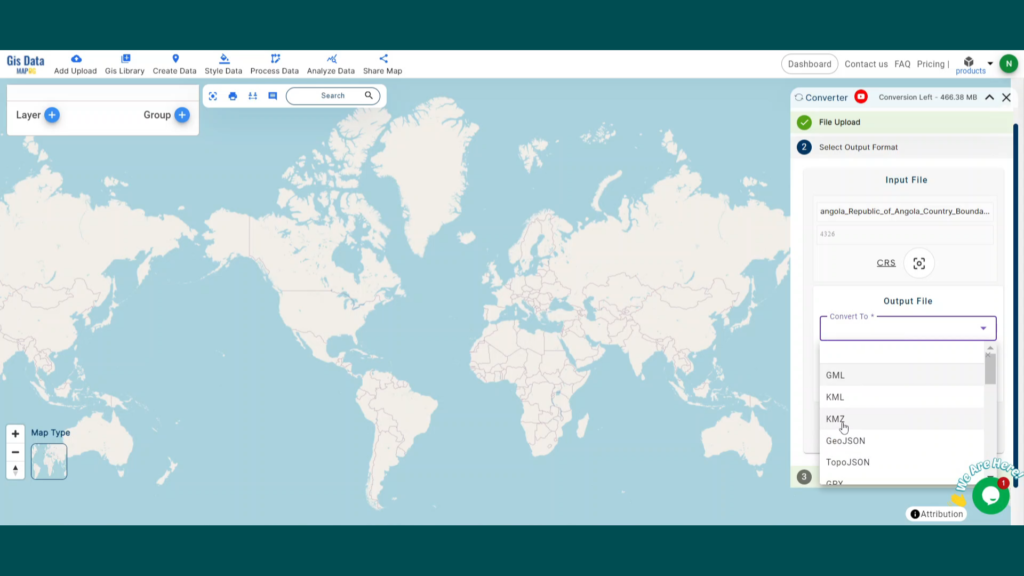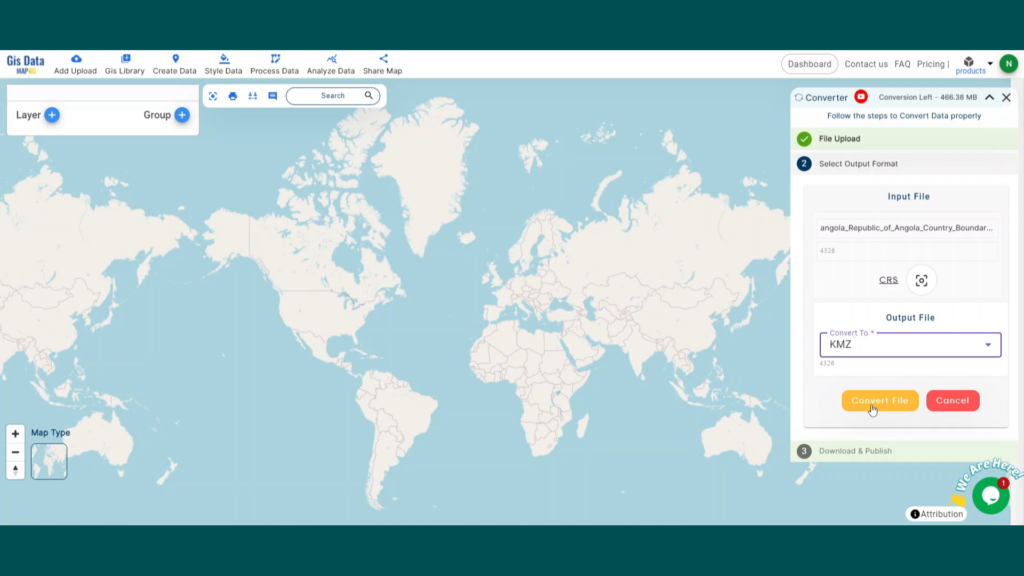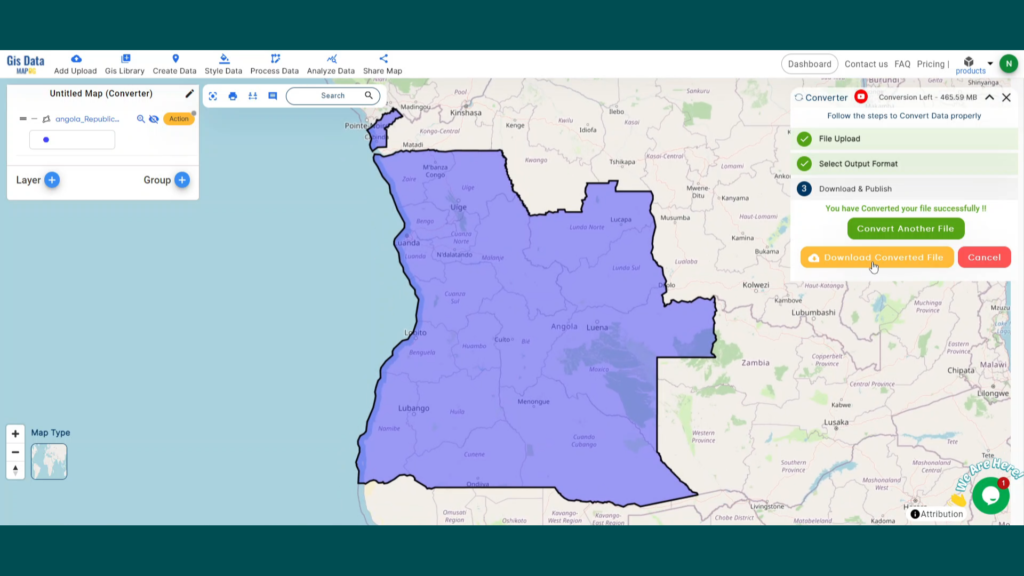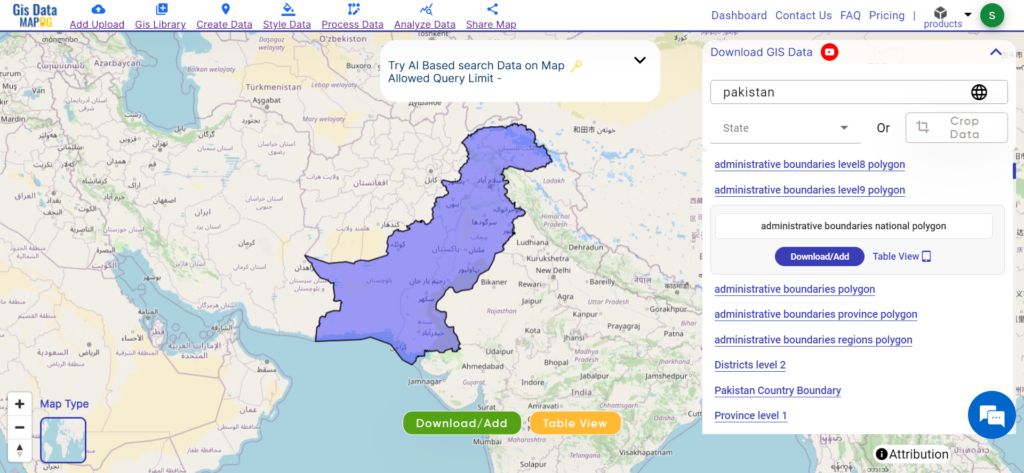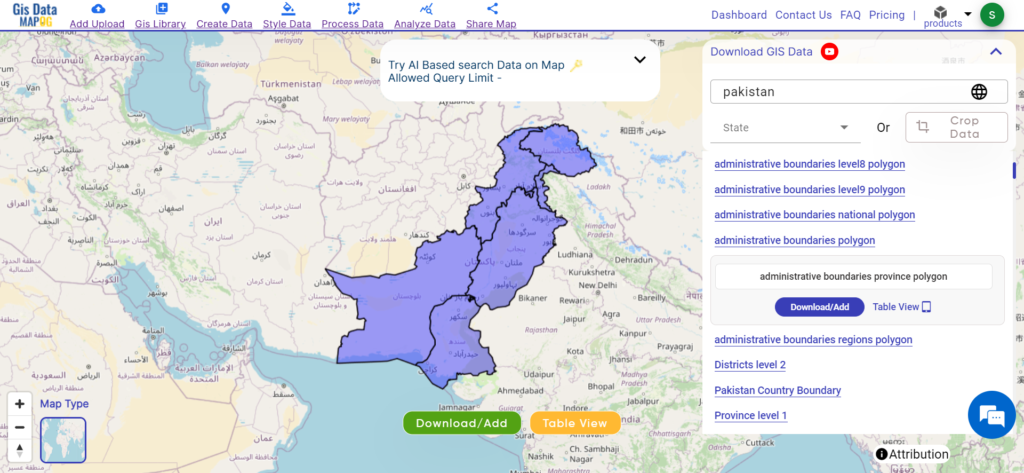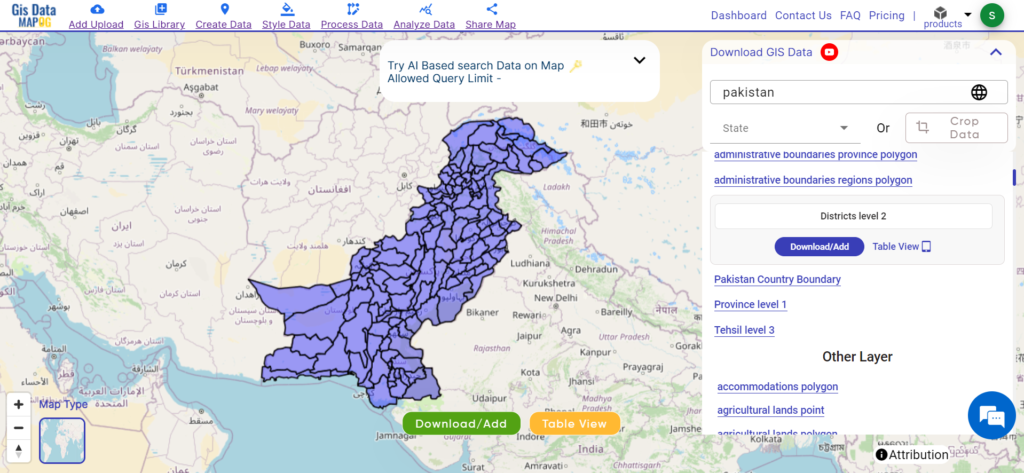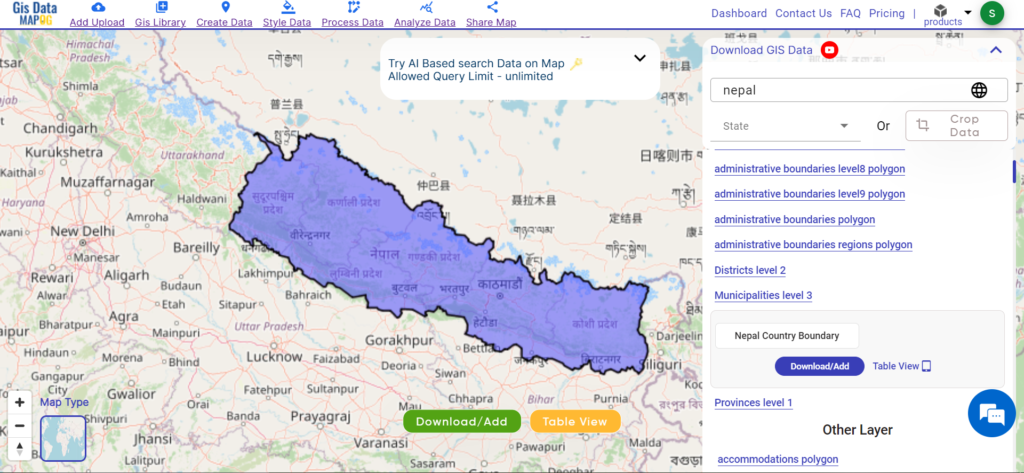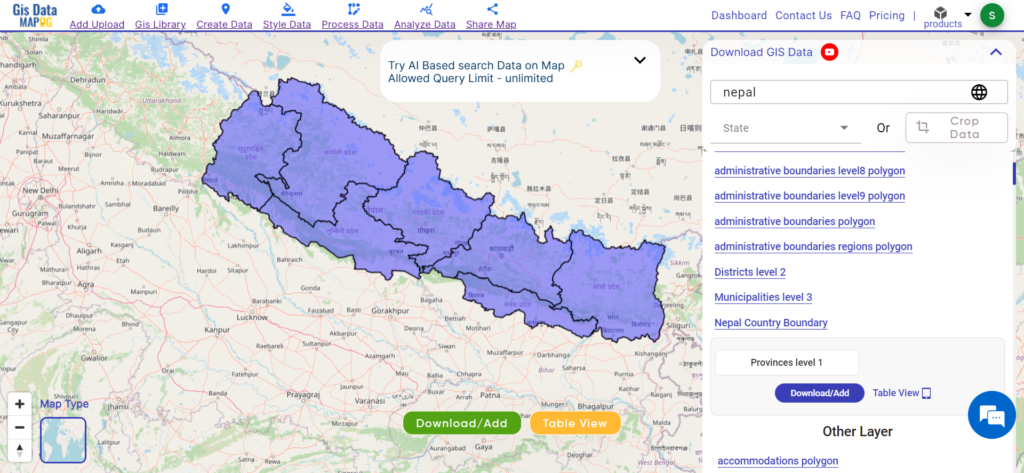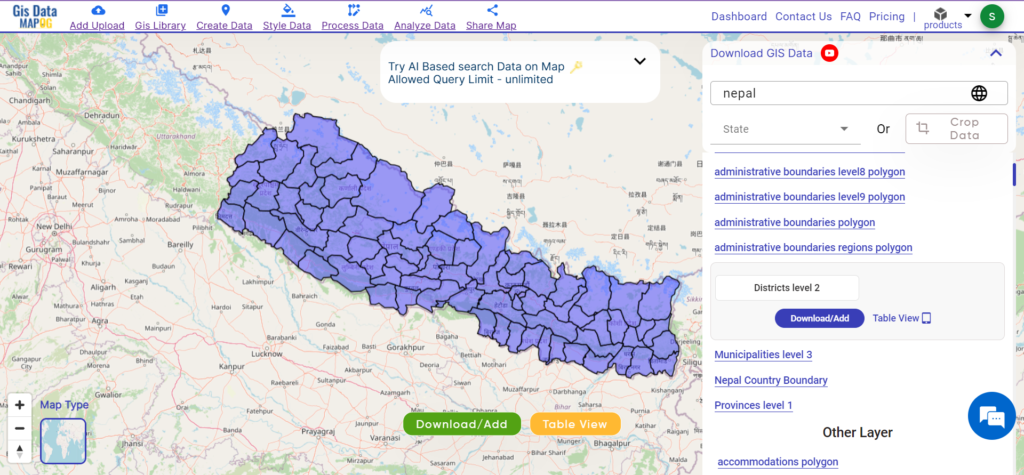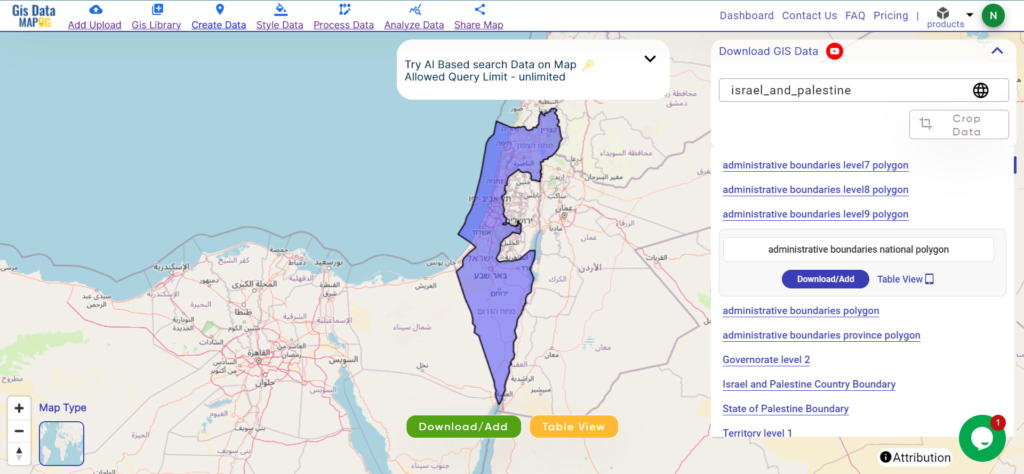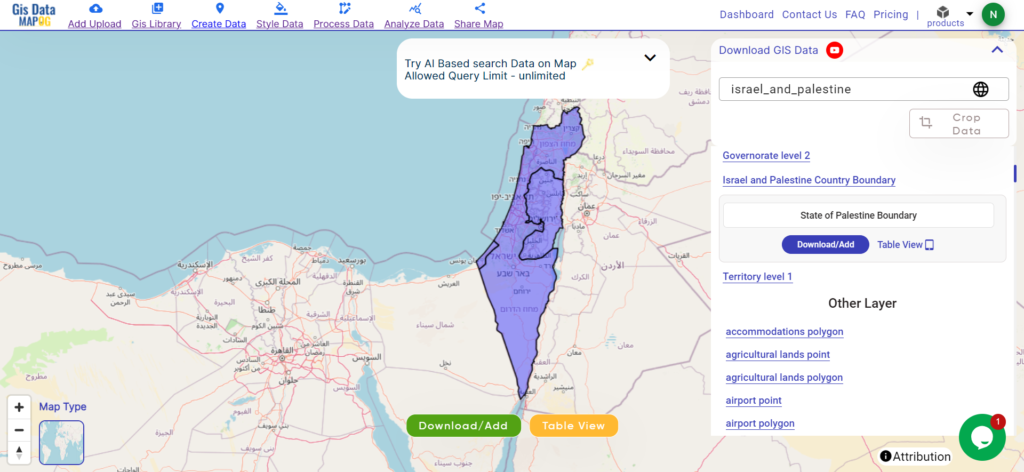Unleash the captivating charm of Moldova with MAPOG! Dive deep into a treasure trove of GIS data, unveiling the intricate details of its diverse landscapes. Traverse the dramatic canyons and ancient cave networks of the Central Moldavian Plateau. Trace the winding courses of the Dniester and Prut Rivers, and chart your exploration across fertile farmlands and historic vineyards. Navigate Moldova’s dynamic landscape with ease using MAPOG‘s data on the country’s transportation network. Explore the web of roads that connect charming villages and modern cities, and take flight with information on Moldova’s essential air gateways. Download this wealth of Moldova GIS data with ease in formats like Shapefile, KML, GeoJSON, and CSV using our user-friendly tools. Empower your exploration of Moldova’s unique geography – choose MAPOG for all your Moldova GIS data needs!.
With MAPOG’s versatile toolkit, you can effortlessly upload vector, add WMS (Web Map Service) layers, upload Excel or CSV data, incorporate existing files, perform polygon splitting and merging, generate new polygon and polyline data, use the converter for various formats, conduct buffer analysis, create grids, transform points into polygons, calculate isochrones, and utilize the geocoder for precise location information.
We offer an extensive array of data formats, including KML, SHP, CSV, GeoJSON, Tab, SQL, Tiff, GML, KMZ, GPKZ, SQLITE, Dxf, MIF, TOPOJSON, XLSX, GPX, ODS, MID, and GPS, ensuring compatibility and accessibility for various applications and analyses.
Note:
- All data available are in GCS datum EPSG:4326 WGS84 CRS (Coordinate Reference System).
- You need to login for downloading the shapefile.
Download Shapefile Data of Moldova
Moldova, officially the Republic of Moldova, is a landlocked country in Eastern Europe, on the northeastern corner of the Balkans. The country spans a total of 33,483 km² (12,928 sq mi) and has a population of approximately 2.5 million. Moldova is bordered by Romania to the west and Ukraine to the north, east, and south. The unrecognized breakaway state of Transnistria lies across the Dniester River on the country’s eastern border with Ukraine. Moldova is a unitary parliamentary representative democratic republic with its capital in Chișinău, the country’s largest city and main cultural and commercial center.
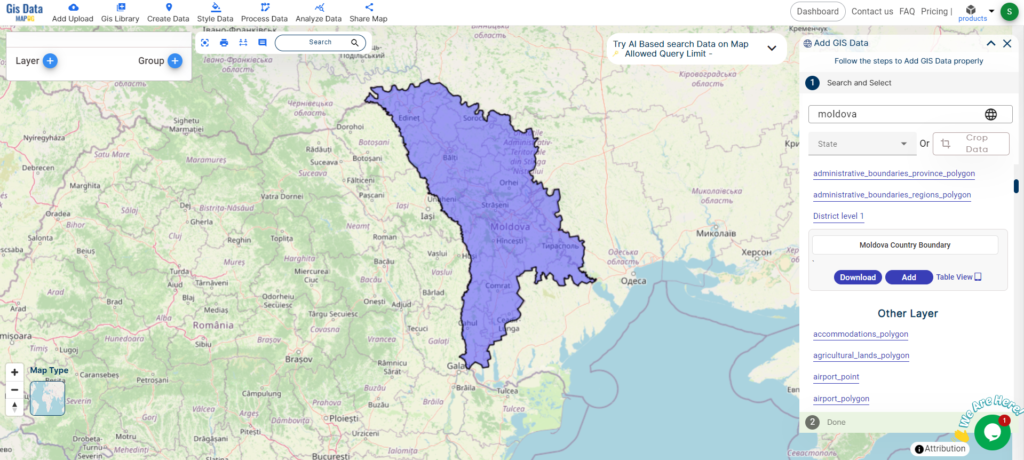
Download Moldova National Boundary Shapefile
After successfully logging in with a legitimate email address, select the country you want to work with. Next, choose the specific layer you need and click on the download option. Once that’s done, pick the desired format to acquire the essential GIS data. Before proceeding with the data download, make sure to review the data table for any relevant information.
Download Moldova Districts Shapefile Data
Moldova is divided into 32 administrative districts, known as “raioane.” These districts serve as essential units of local governance, facilitating the administration of public services, regional development, and community needs. Each district operates under the broader framework of the national government, ensuring that local policies align with national objectives while addressing the specific requirements of their communities.
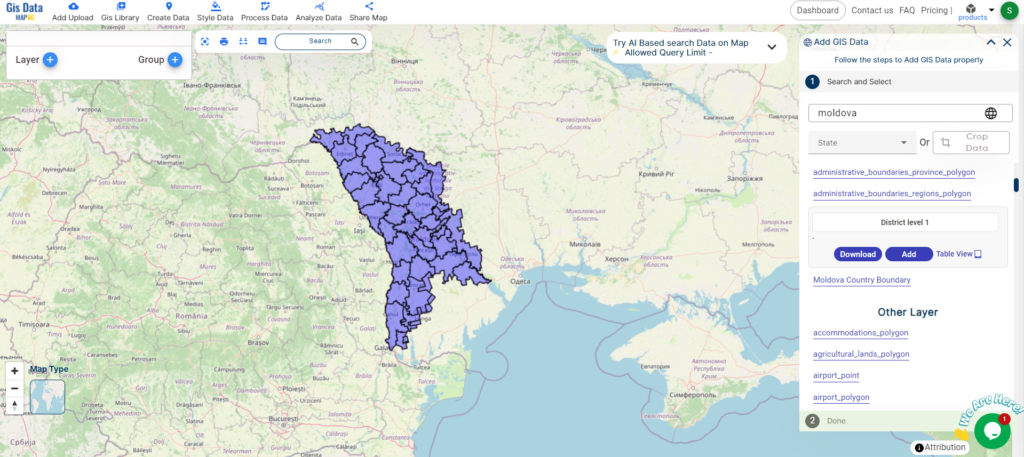
Download Moldova Districts Boundary Shapefile
Below is the list of Moldova’s districts:
- Anenii Noi
- Basarabeasca
- Briceni
- Cahul
- Călărași
- Cantemir
- Căușeni
- Cimișlia
- Criuleni
- Dondușeni
- Drochia
- Dubăsari
- Edineț
- Fălești
- Florești
- Glodeni
- Hîncești
- Ialoveni
- Leova
- Nisporeni
- Ocnița
- Orhei
- Rezina
- Rîșcani
- Sîngerei
- Șoldănești
- Soroca
- Strășeni
- Ștefan Vodă
- Taraclia
- Telenești
- Ungheni
Other GIS Data:
- Download Moldova Airport Point Shapefile
- Download Moldova Highway Lines Shapefile
- Download Moldova Road Lines Shapefile
- Download Moldova Rivers Shapefile
Above all links are provided for GIS data of Moldova if you are looking for any specific data please write us on support@mapog.com
Download Shapefile for the following:
- World Countries Shapefile
- Australia
- Argentina
- Austria
- Belgium
- Brazil
- Canada
- Denmark
- Fiji
- Finland
- Germany
- Greece
- India
- Indonesia
- Ireland
- Italy
- Japan
- Kenya
- Lebanon
- Madagascar
- Malaysia
- Mexico
- Mongolia
- Netherlands
- New Zealand
- Nigeria
- Papua New Guinea
- Philippines
- Poland
- Russia
- Singapore
- South Africa
- South Korea
- Spain
- Switzerland
- Tunisia
- United Kingdom Shapefile
- United States of America
- Vietnam
- Croatia
- Chile
- Norway
- Maldives
- Bhutan
- Colombia
- Libya
- Comoros
- Hungary
- Laos
- Estonia
- Iraq
- Portugal
- Azerbaijan
- Macedonia
- Romania
- Peru
- Marshall Islands
- Slovenia
- Nauru
- Guatemala
- El Salvador
- Afghanistan
- Cyprus
- Syria
- Slovakia
- Luxembourg
- Jordan
- Armenia
- Haiti And Dominican Republic
- Kiribati
- Swaziland
- Solomon Islands
- North Korea
- Sao Tome And Principe
- Guyana
- Serbia
- Senegal And Gambia
- Faroe Islands
- Guernsey Jersey
- Monaco
- Tajikistan
- Pitcairn
Disclaimer : If you find any shapefile data of country provided is incorrect do contact us or comment below, so that we will correct the same in our system as well we will try to correct the same in openstreetmap.
